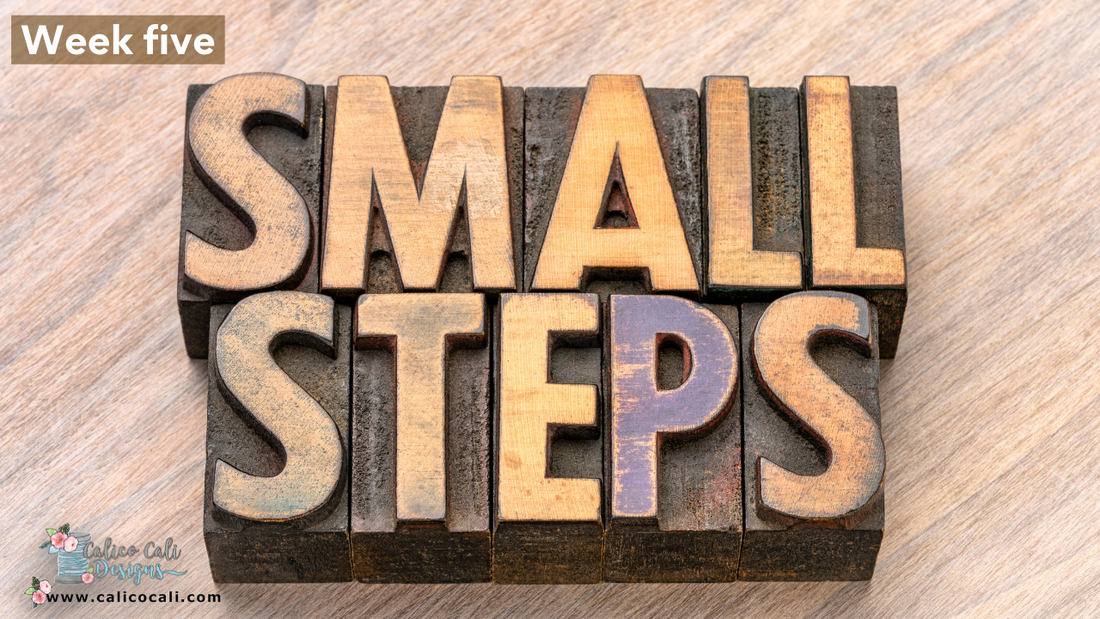
Organize your craft space - week 5
Welcome to week 5 of the Organize your Sewing Space blog series. Let's start with thread. How do you store your thread? There are lots of different thread racks out there, from spinning thread trees, to racks that are built into drawers.

If your drawers are deep enough you could make your own drawer rack by cutting a peg board to fit the inside of the drawer, and putting wooden dowels on the peg board. Lay the peg board flat in your drawer and put the spools on it.

Do you have lot's of golf tees laying around? Then this one might be perfect for you! In this photo inverted golf tees were glued to the drawers, and spaced evenly apart. They make excellent thread holders. FORE!

You could also purchase drawer dividers, like this one for socks. Place it in a drawer and put your threads into each section. You can group them according to thread weights, brand, types or by color. Whatever works best for you.

And of course, you can find containers that are made specifically to hold threads. 
Personally, my threads are organized by color on June Tailor thread racks that are mounted to the wall.


Every spool of thread is wrapped with the Amazing Tape that I talked about in week two.
My wound bobbins are kept in bobbin saver rings. Since bobbin threads come in different weights and I don't want to accidentally mix them up and grab the wrong bobbin, I use different colored bobbin rings for each bobbin type.
I store my embroidery bobbins in one colored ring, and my quilting bobbins in another colored ring. And I never have to worry about accidentally mixing them up.
This is extra helpful if you have more than one machine that uses the same size bobbin. Or if you want to keep embroidery bobbins separate from piecing/sewing bobbins.


Regardless of how you store your threads and wound bobbins, be sure to keep them out of direct sunlight so that they do not fade. To keep them from drying out and becoming brittle, do not store them directly next to a heating or AC vent.
Next, let's talk about dull, and broken needles. As well as bent pins. You need to safely dispose of them so that no one gets poked or cut by pins and needles that are sticking out of the trash bag. I put mine in an empty plastic drink mix container.

Empty pill bottles, spice containers, and even old film canisters work great for this purpose. Once they are full, simple put the cap on and toss in the trash.
BONUS TIP: Prefer to recycle those plastic pill bottles? Well, then once they are full, you can transfer the old needles and pins into a padded envelope. Seal the envelope and put it in the trash. Another option is the wrap the broken/dull/bent needles and pins with duct tape or masking tape. Be sure that all the sharp parts are covered, and discard in the trash. Tape and padded envelopes are also good solutions for disposing of old rotary blades.
Do you like to save the selvage edges from your fabrics? (I do!! I do!!) Store them in an old mason jar! It adds a decorative touch to your space.

I even keep thread snippets in a jar. What can I say..I like the pretty colors and I love how the two jars look in my studio.

One final tip - everyone should be able to have a cutting table. You don't have to spend $100's of dollars to get one either. My table is made up of two inexpensive book cases from Wally world and a piece of wood that we had laying around after a construction project.

Most home improvement stores will cut a sheet of wood down to size for you. Don't be afraid to ask them to cut it for you, I believe they even do it for free (but don't quote me on that. It's been a while since I've had anything cut and it's possible they changed their pricing policy).
Top off your cutting table with one of those giant cutting mats and you are good to go! Seriously, the cutting mat will probably be the most expensive part of the entire project.
That's all for this week! I hope you are enjoying this series and that your craft spaces are looking spiffy!
XOXO,
Kat
